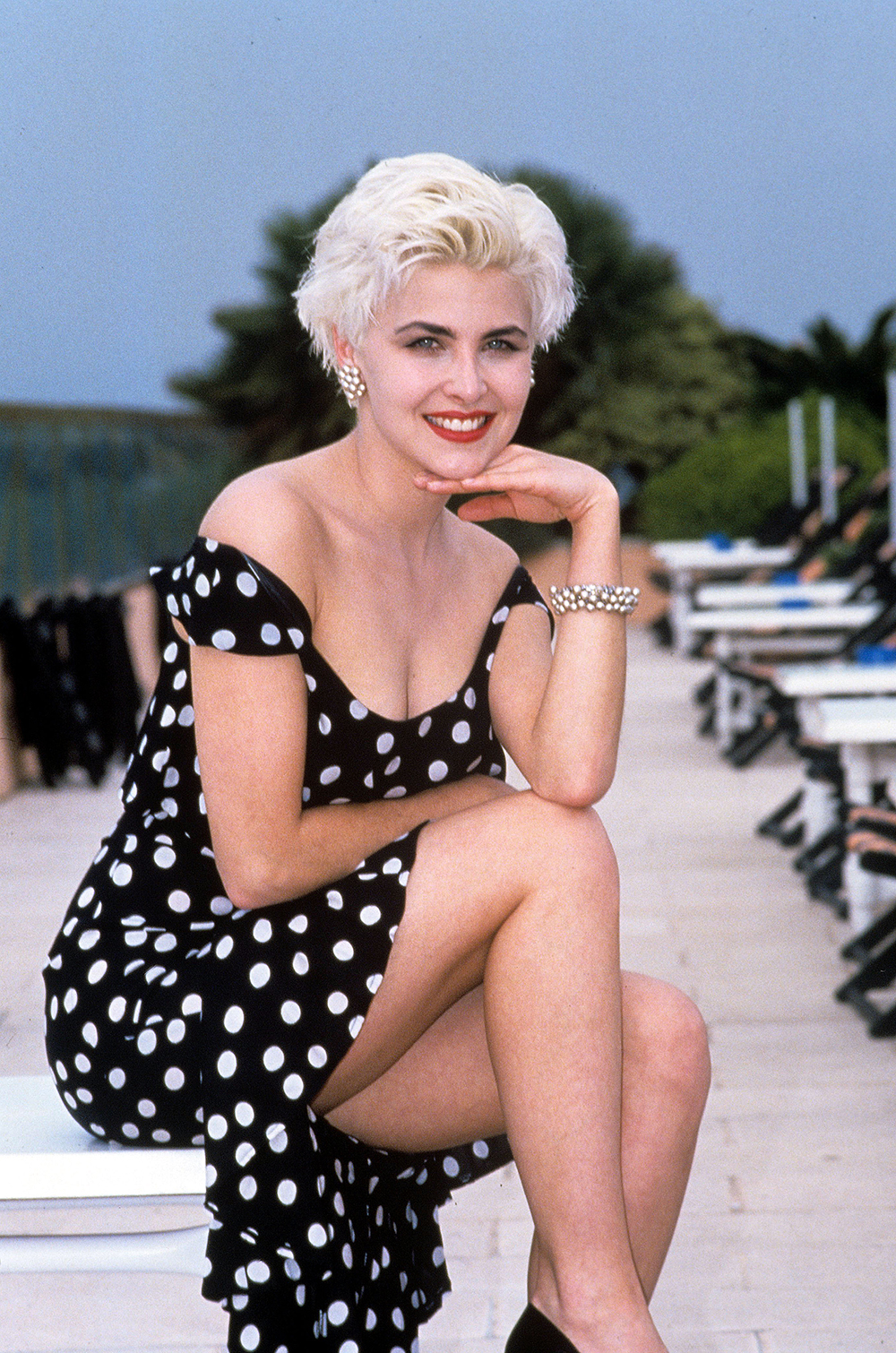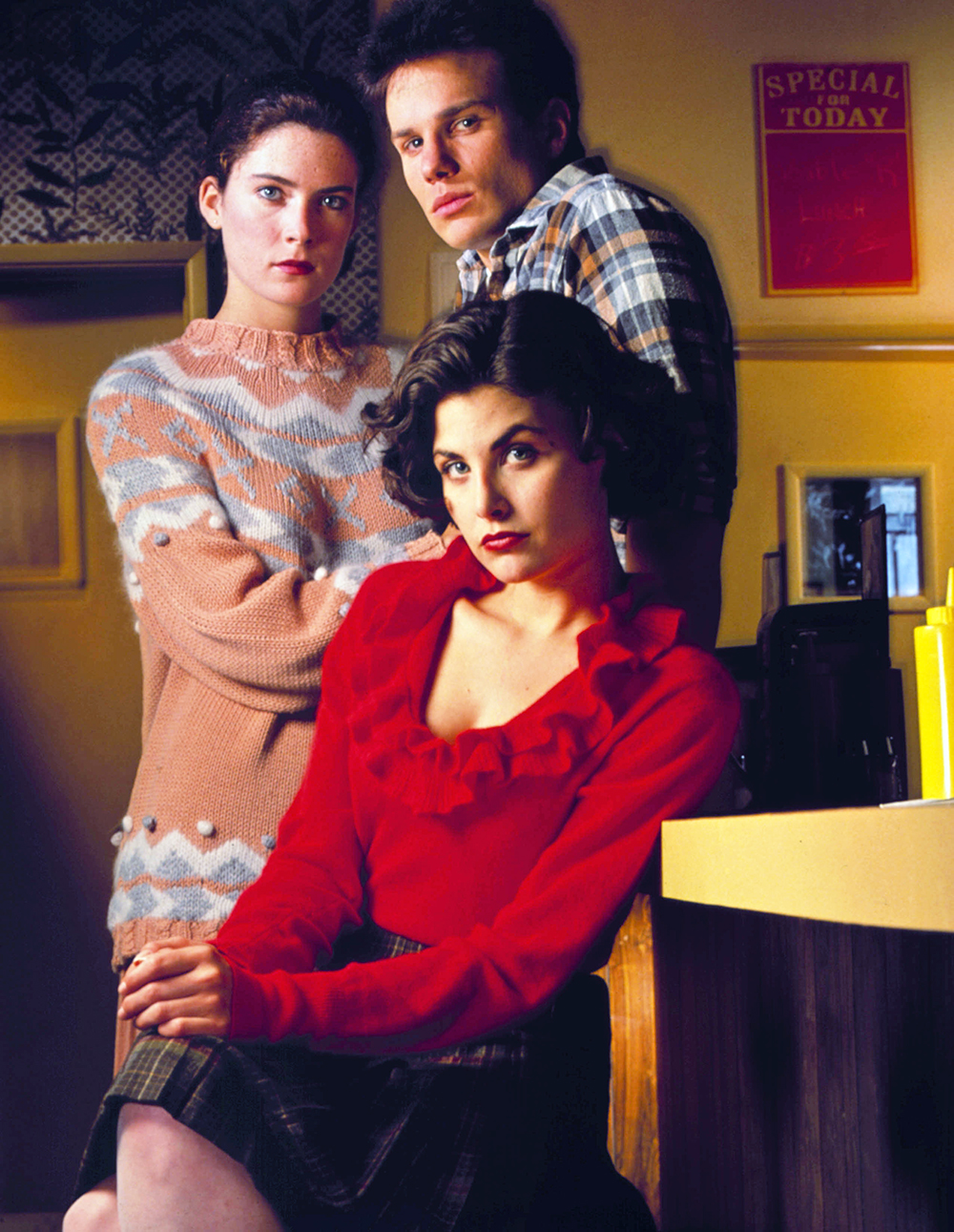A poet’s daughter. A dancer turned actress. A dreamer devoured by her own fame
Imogen Hassall was born on August 25, 1942, in Woking, Surrey, England, into a family that seemed destined for the arts. Her name itself carried a touch of poetry—she was named after Imogen, the heroine of Shakespeare’s
Cymbeline. Growing up surrounded by creativity and culture, she was the granddaughter of renowned illustrator John Hassall and the niece of Joan Hassall, another respected artist.

Her father, Christopher Hassall, was a well-known poet, dramatist, and lyricist, whose work and artistic lifestyle undoubtedly shaped his daughter’s early ambitions. From the beginning, Imogen’s world was filled with books, music, and theater, and her family’s comfortable circumstances provided her with the opportunity to pursue formal training in the arts.
She began her artistic journey as a dancer. Between 1952 and 1954, she studied at the Elmhurst Ballet School in Camberley, before continuing at the Royal Ballet School’s White Lodge between 1955 and 1958. Her talent and grace earned her recognition, and at only sixteen, she spent a short time studying in New York City, broadening her artistic perspective. Yet, despite her early devotion to dance, her ambitions began to shift toward acting.
When she returned to London, she enrolled at the London Academy of Music and Dramatic Art (LAMDA) between 1960 and 1962, where she trained in stage performance and voice. After graduation, she joined the prestigious Royal Shakespeare Company for a season, gaining valuable stage experience that grounded her later work on screen.

By the mid-1960s, Imogen had begun to make her mark on British television. Her striking beauty and poised presence soon caught the attention of producers. She appeared in popular television series of the time, including
The Saint, The Avengers, and The Persuaders!, shows that helped define the stylish, adventurous tone of British television during that era. In 1967, she made one of her first notable film appearances as Tara in
The Long Duel, which opened the door to a series of roles that would define her brief but prolific career.

The late 1960s and early 1970s proved to be Imogen’s most active years in film. She quickly became one of the most visible young actresses in British cinema, appearing in adventure films, thrillers, and comedies. In 1970, she played Ayak, a cave-woman in the cult fantasy film
When Dinosaurs Ruled the Earth, and the same year appeared as Jenny Grubb in Carry On Loving, part of the famous British comedy franchise.
These roles cemented her reputation as a glamorous screen presence, though they rarely allowed her to display the full range of her dramatic training. By the mid-1970s, her filmography included more than thirty screen credits, ranging from adventure and horror to lighthearted comedy.Her fame, however, came with a double edge. The media took a particular interest in her beauty and style, often focusing more on her appearance than her talent.

Her penchant for wearing daring gowns at film premieres made her a favorite subject of the tabloid press, which nicknamed her the “Countess of Cleavage.” While this image made her one of the most photographed women of her day, it also trapped her within the confines of a “glamour girl” persona. Imogen reportedly found this frustrating, as she longed to be taken seriously as an actress.
Despite her classical training and Shakespearean background, the industry largely saw her as a decorative figure rather than a serious performer.Her personal life mirrored the turbulence of her professional struggles. Imogen married actor Kenneth Ives, and in 1972, she gave birth to their daughter, Melanie Ives Hassall. The baby’s tragic death just four days after birth devastated her.
Years later, she married actor Andrew Knox, but the marriage lasted only a few months, ending after she suffered a miscarriage. These losses left a deep mark on her, and combined with a fading career, they contributed to a growing sense of despair. Her relationships were often scrutinized by the tabloids, adding public pressure to private pain.

Friends would later recall that she was a sensitive, intelligent woman who felt trapped by her image and unfulfilled by the work she was offered.By the late 1970s, Imogen’s career had stalled. Roles became scarce, and the glamorous reputation that once fueled her fame now made it harder for her to find meaningful work. She occasionally took on small theater roles, but reports suggest that she struggled financially and emotionally during these final years.
Once a familiar face in film magazines, she became increasingly isolated, her public appearances dwindling. Some accounts claim she even took jobs outside of acting to support herself, an indication of how far her star had fallen in a short time.On November 16, 1980, Imogen Hassall was found dead in her Wimbledon home at the age of thirty-eight. The cause was ruled an overdose of barbiturates.
Those who knew her believed her death was not sudden but the result of years of accumulated sorrow—grief over her lost child, frustration over her stalled career, and depression that had quietly consumed her. Her passing shocked the film community and fans who had admired her for her beauty, style, and vitality. To many, she came to symbolize the darker side of fame: the loneliness and despair that often linger behind the glittering façade.

Though her career was relatively short, Imogen Hassall remains a fascinating figure in British cinema. Her story is one of talent and tragedy, of a woman who possessed both the beauty that Hollywood demanded and the skill it often ignored. She represents a generation of actresses who were typecast by appearance, pigeonholed into the roles that diminished their range.
Her life also serves as a reminder of the human cost of fame—the pressures, expectations, and emotional toll that often remain unseen. Even now, decades after her death, Imogen’s image continues to evoke both admiration and sadness, her career a portrait of promise never fully realized. In the end, she remains one of the most poignant figures of her era—an actress whose brilliance flickered too briefly, leaving behind a legacy of both allure and heartbreak.
A studio portrait taken on this day in 1990, who is this magnetic Hollywood rebel whose cool allure left co-stars smitten and turned a certain cult TV town upside down?

In 1990, a single studio portrait captured the essence of Sherilyn Fenn at the height of her fame — an actress whose beauty, presence, and enigmatic allure made her one of the most magnetic figures of her generation. With her striking dark hair, porcelain skin, and a gaze that carried both mystery and mischief, Fenn seemed as though she had stepped straight out of Old Hollywood. Yet she wasn’t simply a throwback to a bygone era; she was a rebel in her own right, carving out a place for herself in a rapidly shifting Hollywood landscape.

Born in Detroit, Michigan, in 1965, Sherilyn Fenn grew up in a family with creative bloodlines. Her mother was a keyboard player who toured with rock bands, and her aunt and grandmother were involved in the performing arts. When her family relocated to Los Angeles, Fenn found herself drawn toward acting, determined to forge her own path. In the 1980s, she began taking on small roles in films and television, honing her craft while radiating a presence that couldn’t be ignored. Even in her earliest appearances, casting directors and fellow actors noticed her magnetism — a rare blend of softness and steel, of vulnerability and defiance.

By the late 1980s, she was working steadily, appearing in projects such as Wild at Heart and Just One of the Guys, but it was in 1990 that she truly became a phenomenon. Cast as Audrey Horne in David Lynch and Mark Frost’s groundbreaking television series Twin Peaks, Sherilyn Fenn became the definition of a scene-stealer. As the rebellious daughter of a wealthy businessman, Audrey was sultry, dangerous, and unexpectedly endearing. With her retro-inspired wardrobe, slow-burning smirk, and unforgettable dance to “Audrey’s Theme” in the middle of a diner, Fenn didn’t just play a character—she became an icon of the era.

What set Fenn apart was her ability to do so much with so little. She didn’t need elaborate dialogue to command attention; often, a single glance or a subtle gesture was enough to capture the screen. Her chemistry with co-stars, particularly Kyle MacLachlan’s Agent Dale Cooper, left fans breathless and writers scrambling to expand her role. Originally meant to be a secondary character, Audrey Horne became central to the Twin Peaks mythology largely because of Fenn’s magnetic performance. Critics compared her to Hollywood legends like Ava Gardner and Elizabeth Taylor, while fans embraced her as a symbol of both innocence and rebellion.

But behind the cool, collected surface, Sherilyn Fenn was navigating the same pressures that so many actresses of her generation faced. She resisted being typecast as simply the “bombshell,” pushing herself to take on roles that allowed her to stretch as an actress. In interviews, she spoke openly about the challenges of Hollywood’s obsession with youth and beauty, and her desire to find characters with depth and humanity. After Twin Peaks, she appeared in a wide range of projects, from period dramas to independent films, each time proving her versatility.

Her refusal to be boxed in by one role or one image was itself an act of rebellion. Where some stars allowed themselves to be packaged and polished by the Hollywood machine, Fenn leaned into her individuality. She embraced unusual roles, took risks in independent cinema, and maintained an authenticity that endeared her to fans who were searching for something real in an industry often built on illusion.

Over time, she became a touchstone for other performers who admired her fearlessness. She worked with directors like Gary Sinise in Of Mice and Men (1992), showcasing a raw, emotional side far removed from Audrey’s sly mystique. Later, she appeared in projects ranging from Gilmore Girls to Ray Donovan, proving her longevity in a business that often moves on too quickly from its stars.

Even today, that 1990 portrait resonates because it captures Sherilyn Fenn at the very moment she became unforgettable — when her blend of Old Hollywood glamour and modern edge collided on the screen, leaving audiences entranced. It wasn’t just her beauty, though that was undeniable. It was her defiance, her unwillingness to be just one thing, and her ability to make every frame feel alive with possibility.
For fans of Twin Peaks, Sherilyn Fenn will forever be Audrey Horne, the high school rebel who turned a small logging town upside down with nothing more than a raised eyebrow and a slow walk across a room. But for those who have followed her career, she represents something larger: a Hollywood actress who refused to play by the rules, who embraced her artistry on her own terms, and who continues to inspire with her mix of vulnerability, strength, and undeniable charm.

The portrait from 1990 is more than just a photograph. It’s a reminder of a moment when Sherilyn Fenn redefined what it meant to be a star — not simply someone who shone brightly for a fleeting moment, but someone whose presence lingered, haunting and irresistible, long after the credits rolled.




